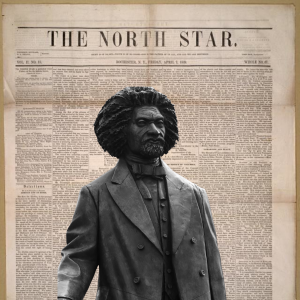Boss Up: How to Make and Utilize Your Media Kit Like a Pro
4 min read
Your media kit is more than just a collection of pretty pictures and stats—it’s your business card, resume, and portfolio all rolled into one. Whether you’re an entrepreneur, an artist, or a content creator, having a well-crafted media kit can open doors to new opportunities, partnerships, and growth. But how do you create one that stands out, and more importantly, how do you make it work for you? Let’s break it down.
What is a Media Kit?
A media kit, sometimes referred to as a press kit, is a document that provides essential information about your brand, business, or personal platform. It’s your chance to present your story, achievements, and offerings in a way that’s both informative and visually appealing. A typical media kit includes your bio, contact information, brand values, statistics, case studies, press mentions, and a portfolio of your work.
Why Do You Need a Media Kit?
A media kit is your best friend when it comes to making a solid first impression. Whether you’re pitching to potential clients, reaching out to the press, or collaborating with other brands, a media kit showcases your professionalism and helps others understand what you bring to the table. It’s also a great tool for controlling the narrative around your brand, ensuring that the story being told about you is the one you want people to hear.
How to Create a Media Kit
1. Start with the Basics: Your Bio and Contact Information
Your media kit should kick off with a brief bio that tells your story in a compelling way. This is where you highlight who you are, what you do, and why you do it. Don’t forget to include your contact information—email, phone number, and social media handles—so people can easily get in touch with you.
2. Define Your Brand: Values and Mission Statement
What does your brand stand for? What’s your mission? This section is where you clearly define your brand’s values and mission statement. Be authentic and concise, as this will help potential partners or clients understand what drives you.
3. Show Off Your Achievements: Stats and Milestones

Numbers speak volumes. Include impressive statistics like your social media following, website traffic, or the number of clients you’ve worked with. Highlight any major milestones, awards, or recognitions that set you apart from the competition.
4. Share Your Story: Case Studies and Testimonials
Nothing sells your brand better than real-world success stories. Include case studies that showcase your work and the impact you’ve had on clients or projects. Testimonials from satisfied clients or partners add credibility and give your media kit a personal touch.
5. Highlight Your Work: Portfolio Section
This is where you let your work do the talking. Include high-quality images, videos, or links to your best projects. Whether you’re a graphic designer, photographer, writer, or entrepreneur, your portfolio should be a visual representation of your skills and creativity.
6. Include Press Mentions: Where Have You Been Featured?
If you’ve been featured in the media, this is the place to flaunt it. Include logos and links to any press mentions, interviews, or articles where your work has been showcased. This not only boosts your credibility but also shows that others recognize your value.
7. Wrap It Up: Call to Action
End your media kit with a clear call to action. Whether you’re looking for new clients, press coverage, or collaboration opportunities, let people know what you want and how they can work with you. Make it easy for them to take the next step.
How to Utilize Your Media Kit
Creating a killer media kit is just the first step. To truly make it work for you, you need to know how to use it effectively.
1. Pitching to Media Outlets
When reaching out to journalists, bloggers, or influencers, your media kit serves as a one-stop shop for everything they need to know about you. Attach it to your email pitch and highlight the sections that are most relevant to the story you’re pitching.
2. Attracting New Clients or Partners
A media kit is a powerful tool in client meetings or when pitching to potential partners. It shows that you’re serious about your brand and provides all the information they need to make an informed decision. Plus, it saves time—no need for back-and-forth emails asking for details.
3. Leveraging Networking Events
Whether it’s a conference, a trade show, or a local networking event, having your media kit on hand can set you apart from the crowd. While others hand out business cards, you’ll be handing over a comprehensive snapshot of your brand that leaves a lasting impression.
4. Updating and Distributing Regularly
Your media kit isn’t a one-and-done deal. Keep it updated with your latest stats, projects, and press mentions. Whenever you hit a new milestone or achieve something noteworthy, make sure it’s reflected in your media kit. Distribute it to your contacts, upload it to your website, and share it on your social media channels to keep your network in the loop.
Here are some popular online platforms that allow you to create professional-looking media kits for free:
Design and Layout Tools:
- Canva: Known for its user-friendly interface and extensive template library, Canva offers a free plan that includes media kit templates.
- Visme: This platform provides a drag-and-drop editor and customizable templates to create interactive media kits.
- Adobe Express: A simplified version of Adobe Creative Cloud, Adobe Express offers free media kit templates and basic design tools.
Influencer-Specific Platforms:
- InfluencerHub: This platform provides a free media kit builder for influencers to showcase their work and statistics.
- CreatorIQ: While it primarily focuses on influencer management, CreatorIQ offers a free media kit builder for influencers.
General Purpose Tools:
- Google Slides: A simple yet effective tool, Google Slides can be used to create basic media kits with slides containing your information.
- Microsoft PowerPoint: Similar to Google Slides, PowerPoint can be used to create professional-looking media kits.







